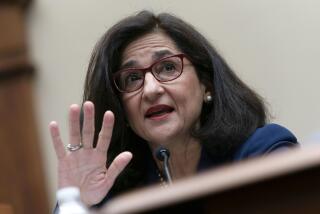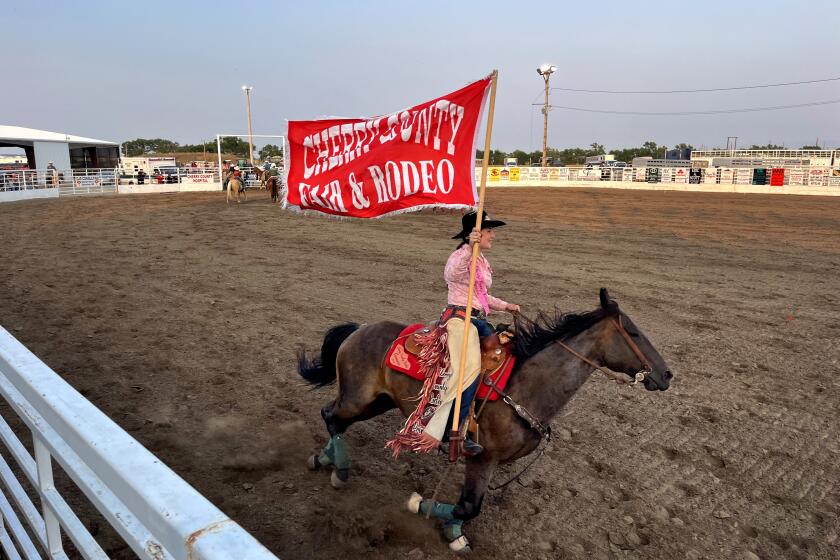First B-1B Bomber Crash; 3 killed, 3 Bail Out in Colo.
A B-1B Air Force bomber crashed today in rolling farmland in southeastern Colorado, killing three crewmen, but three others parachuted to safety, authorities said.
A spokesman for the Colorado State Patrol said rescue workers and investigators at the scene of the crash were trying to locate the bodies of the dead crew members.
The three survivors were picked up by a La Junta police officer not far from the crash site and were reported in good condition, officials said.
The crash was the first ever for a regular production model of the B1-B, although a smaller prototype B1-A crashed in August, 1984, in California’s Mojave Desert. One man was killed and two others seriously injured in that accident.
‘Felt a Thud’
An eyewitness to today’s crash, Bud Quick, said he “felt a thud,” saw a ball of fire flare up behind some hills and saw three parachutes floating to the ground.
Greg Ricken, who lives 20 miles east of La Junta, said that the plane flew almost directly over him and that the tail appeared to be on fire. He said the smoke got heavier and the plane seemed to angle to the right before it went over the horizon and a fireball appeared.
“There is no recognizable remains of the plane,” said Virgil Cochran, a reporter who flew over the site. “All we could see was a black spot on the ground and a hole in the ground.”
The bomber, attached to the 96th Bombardment Wing, took off from Dyess Air Force Base in Abilene, Tex., early this morning, bound for the Strategic Training Range Complex near La Junta, about 60 miles southeast of Pueblo, the Strategic Air Command said.
$27 Billion for 100 Planes
The Air Force is buying 100 of the four-engine B-1Bs at a cost of nearly $27 billion. Of these, 66 have been delivered.
The B-1B, a strategic bomber and missile platform, is manufactured by Rockwell International’s North American Aerospace Operations in El Segundo, Calif. It has a maximum speed of about 1,000 m.p.h. and a range of more than 7,000 miles when fully fueled.
The B-1B is designed to fly at almost the speed of sound at altitudes of only 200 feet above the ground.
The B-1B is the nation’s newest long-range strategic bomber--the first such plane produced in more than 25 years. The first of the 100 B-1B’s being purchased by the Air Force were activated in October, 1986, at Dyess.
The B-1B was the subject of a budget fight during the Carter Administration and more recently there have been technical problems with it.
Serious Problems
The B-1B became operational in September, 1986, and has had serious problems with leaky fuel tanks in its wings and with electronics warfare equipment.
Among its woes was a problem with the terrain-following radars that are used chiefly for low-level training flights. There was no immediate indication whether the plane was on a low-level flight at the time of the crash.
President Jimmy Carter squashed the predecessor of the B-1B on the ground that the extra defense it produced was insufficient to justify the expense in an age of missiles.
The plane was revived by President Reagan and finally put into production as an element in Reagan’s defense buildup. In a unique arrangement, the Air Force was given the job of being the prime contractor--responsible for seeing that all the plane’s systems were integrated and would work as a package, a task normally given to the primary builder of a weapons system. The Air Force’s ability to handle that task came under fire on Capitol Hill.
More to Read
Sign up for Essential California
The most important California stories and recommendations in your inbox every morning.
You may occasionally receive promotional content from the Los Angeles Times.






